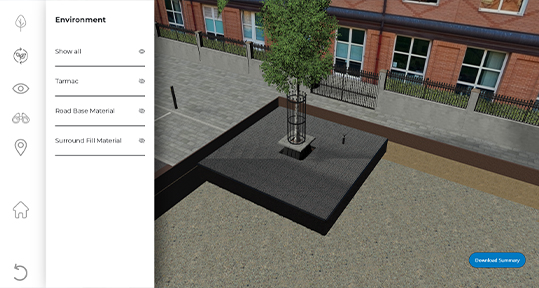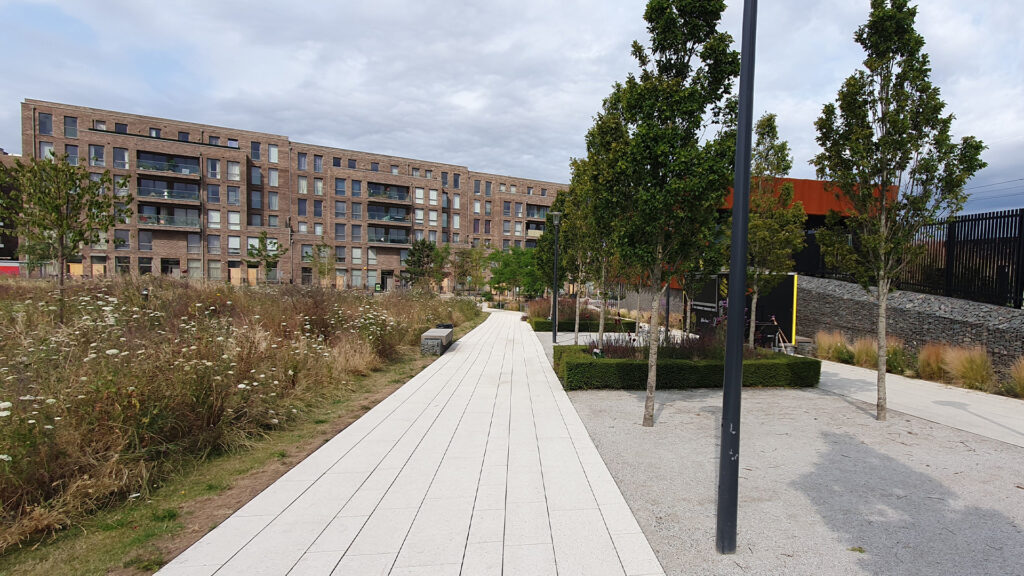Green Lanes, in north London, one of London’s longest stretches of road with a single name, is a road of great antiquity.
Green Lanes, in north London, one of London’s longest stretches of road with a single name, is a road of great antiquity. Probably dating back to the Roman times, it has been used for centuries as a drover’s way, a wide thoroughfare down which cattle were walked into London. It was preferred to the other major arterial routes, also Roman roads, such as Ermine Street heading towards Lincoln (now the A10), a road heading eastwards to Chelmsford, and the north heading Watling Street, running to St. Albans.
Up until the 19th Century, much of this road running through the parish of Stoke Newington was rural, passing through farmland and small holdings. The coming of the railways revolutionised this part of London, as it meant that those working in the city could commute – a hitherto rarely used term. This migration from city centre to nicer outlying areas and mass house building became common.
Opposite the beautiful Clissold Park – then still in private hands – a new development was taking shape. This consisted of three roads containing a mix of terraced and semi-detached villas with decent gardens. It was the developer’s intention to provide better accommodation for families than could be obtained closer in to the city, and whilst the quality of the buildings would not impress us today, they were impressive at the time.
Project
Location
Contractor
Landscape Architect
Green Lanes, in north London, one of London’s longest stretches of road with a single name, is a road of great antiquity.
Green Lanes, in north London, one of London’s longest stretches of road with a single name, is a road of great antiquity. Probably dating back to the Roman times, it has been used for centuries as a drover’s way, a wide thoroughfare down which cattle were walked into London. It was preferred to the other major arterial routes, also Roman roads, such as Ermine Street heading towards Lincoln (now the A10), a road heading eastwards to Chelmsford, and the north heading Watling Street, running to St. Albans.
Up until the 19th Century, much of this road running through the parish of Stoke Newington was rural, passing through farmland and small holdings. The coming of the railways revolutionised this part of London, as it meant that those working in the city could commute – a hitherto rarely used term. This migration from city centre to nicer outlying areas and mass house building became common.
Opposite the beautiful Clissold Park – then still in private hands – a new development was taking shape. This consisted of three roads containing a mix of terraced and semi-detached villas with decent gardens. It was the developer’s intention to provide better accommodation for families than could be obtained closer in to the city, and whilst the quality of the buildings would not impress us today, they were impressive at the time.
Project
Location
Contractor
Landscape Architect
Project
Location
Contractor
Landscape Architect
When men were first called up for military duty during the first world war, the Government found to its horror that many were unfit for service due to poor living conditions, and when the soldiers returned from the trenches, it began a policy of “homes fit for heroes”, by clearing slum housing and rebuilding social housing to a better standard. What the Government did not finish then was assisted by bombing during the second wold war, (Hackney losing approximately 4000 homes) which provided an opportunity to improve the housing stock.
The London Borough of Hackney became a laboratory for social housing experiments, trialling several different designs and options across the borough. Many of these particularly low-rise estates, have become popular, and are very much loved today. However, the Kings Crescent Estate, built on the land vacated by the demolition of the above three roads, consisting of two 20 floor towers, completed between 1969 and 1971 became problematic and disliked, and Hackney decided to demolish and replace the tower blocks with a stunning new development providing more homes, better accommodation and a fantastic public realm.
Complex planning of the first phase of this award-winning scheme was accomplished by Tibbalds planning Consultancy designed by Karakusevic Carson Architects were completed in 2017, bringing 50% of the 700 planned high quality homes to Hackney residents.
Our latest podcast with Lizzie Le Mare states:
Regeneration is often complicated and clever ways were needed to integrate space in order to tie together one cohesive neighbourhood.
When men were first called up for military duty during the first world war, the Government found to its horror that many were unfit for service due to poor living conditions, and when the soldiers returned from the trenches, it began a policy of “homes fit for heroes”, by clearing slum housing and rebuilding social housing to a better standard. What the Government did not finish then was assisted by bombing during the second wold war, (Hackney losing approximately 4000 homes) which provided an opportunity to improve the housing stock.
The London Borough of Hackney became a laboratory for social housing experiments, trialling several different designs and options across the borough. Many of these particularly low-rise estates, have become popular, and are very much loved today. However, the Kings Crescent Estate, built on the land vacated by the demolition of the above three roads, consisting of two 20 floor towers, completed between 1969 and 1971 became problematic and disliked, and Hackney decided to demolish and replace the tower blocks with a stunning new development providing more homes, better accommodation and a fantastic public realm.
Complex planning of the first phase of this award-winning scheme was accomplished by Tibbalds planning Consultancy designed by Karakusevic Carson Architects were completed in 2017, bringing 50% of the 700 planned high quality homes to Hackney residents.
Our latest podcast with Lizzie Le Mare states:
Regeneration is often complicated and clever ways were needed to integrate space in order to tie together one cohesive neighbourhood.
The public realm areas, designed by Muf architecture were based around the needs of the residents, centred around the main street, which has been designed to be a playable area and also a route to the Clissold Park. This park, now open to the public gives an unenclosed eastern vista for most of the residents, reducing the impact of the high-density development.
Muf Architecture, working with GreenBlue Urban, carefully designed the infrastructure so that the new trees can establish in a very heavily engineered environment; and by cleverly incorporating different natural elements around these trees, provides:
- A play space for children
- An event area for the community
- Benches for the elderly a
- Areas for socialising.
Completed in 2018 a number of key practitioners are proud to be involved in this brilliant design and build. RootSpace 600, ArborVent Aeration, Guying and Tree protection will ensure maximum value is gained from the site, which will continue to become more and more effective as the 60 plus trees grow to reach their species potential – providing the multiple benefits that only mature trees can bring.
The public realm areas, designed by Muf architecture were based around the needs of the residents, centred around the main street, which has been designed to be a playable area and also a route to the Clissold Park. This park, now open to the public gives an unenclosed eastern vista for most of the residents, reducing the impact of the high-density development.
Muf Architecture, working with GreenBlue Urban, carefully designed the infrastructure so that the new trees can establish in a very heavily engineered environment; and by cleverly incorporating different natural elements around these trees, provides:
- A play space for children
- An event area for the community
- Benches for the elderly a
- Areas for socialising.
Completed in 2018 a number of key practitioners are proud to be involved in this brilliant design and build. RootSpace 600, ArborVent Aeration, Guying and Tree protection will ensure maximum value is gained from the site, which will continue to become more and more effective as the 60 plus trees grow to reach their species potential – providing the multiple benefits that only mature trees can bring.









